Unit 11 Sad movies make me cry.Period 2(Section A 3a-3c)课件(共12张PPT)
文档属性
| 名称 | Unit 11 Sad movies make me cry.Period 2(Section A 3a-3c)课件(共12张PPT) | 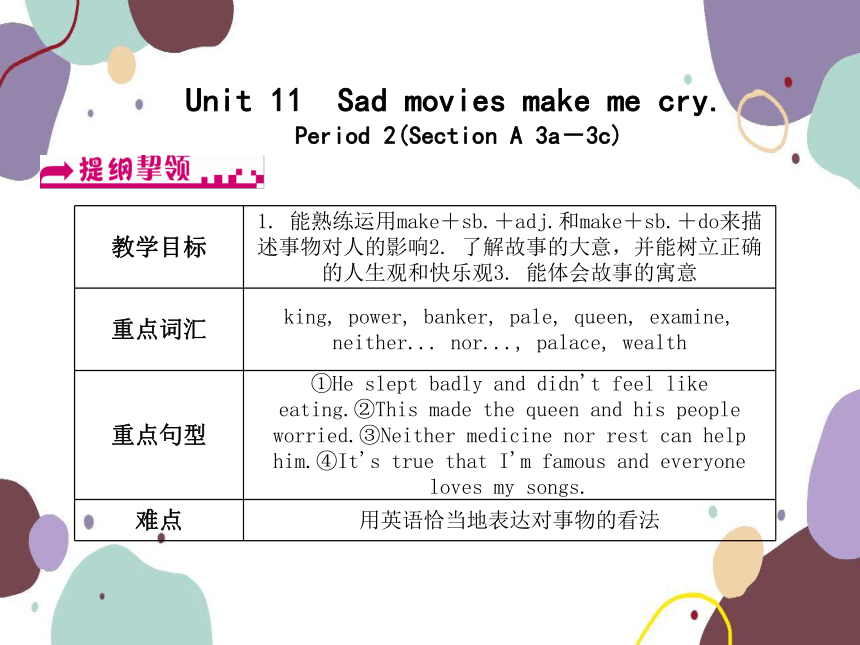 | |
| 格式 | pptx | ||
| 文件大小 | 219.1KB | ||
| 资源类型 | 教案 | ||
| 版本资源 | 人教新目标(Go for it)版 | ||
| 科目 | 英语 | ||
| 更新时间 | 2022-10-18 09:18:48 | ||
图片预览

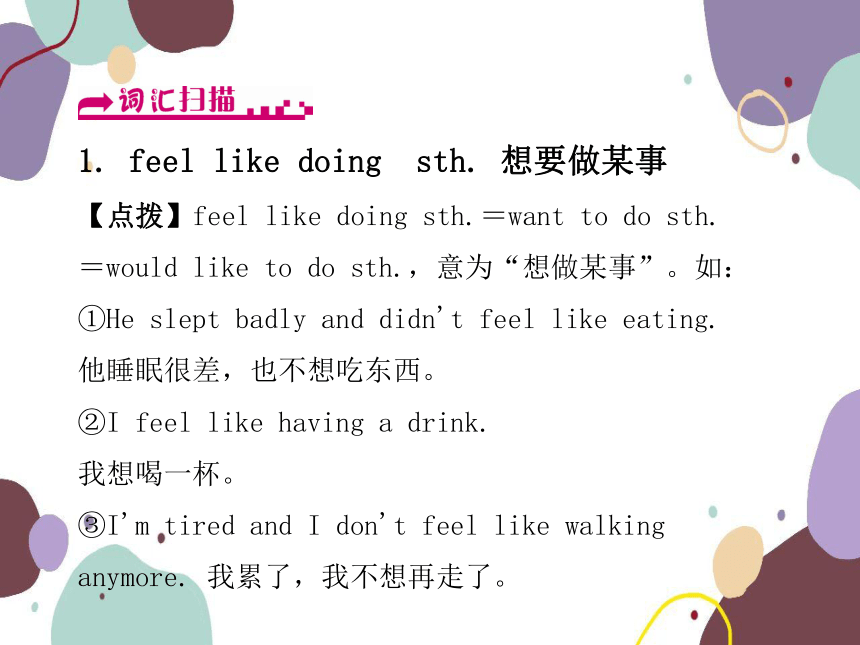
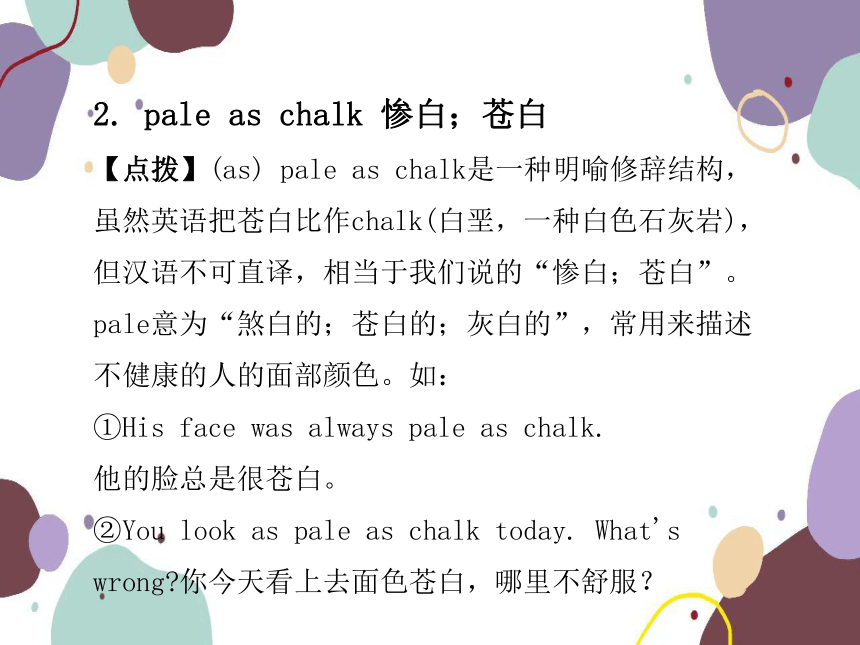

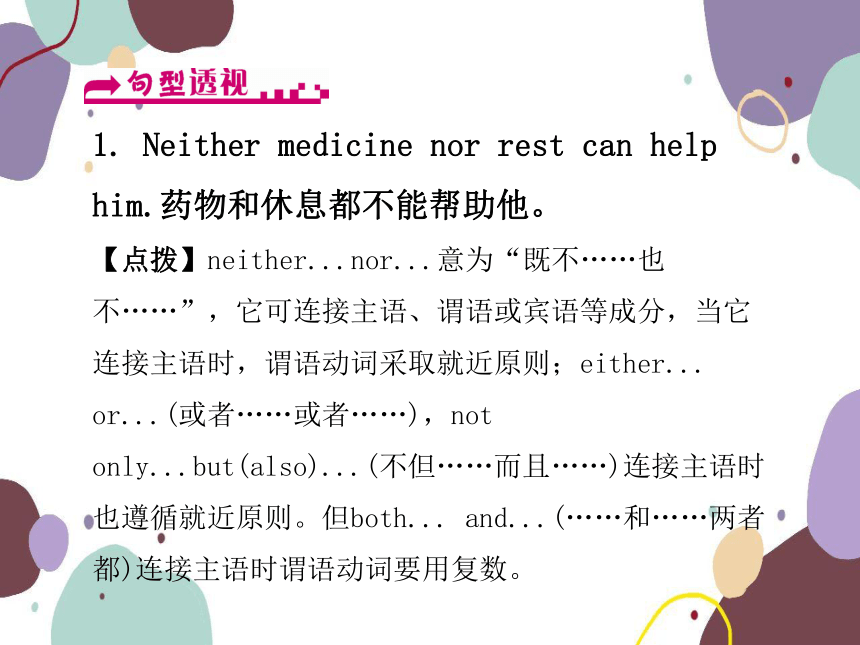
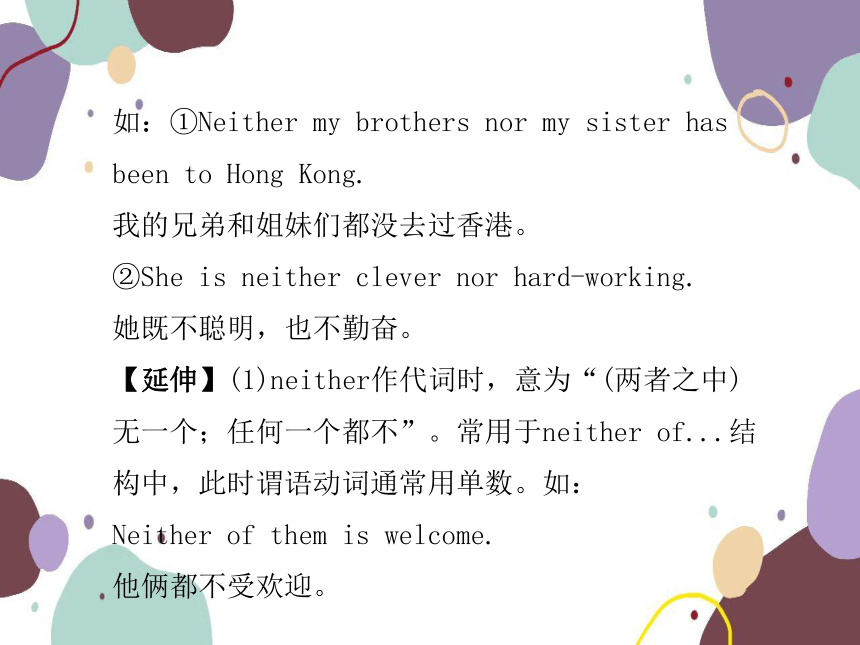
文档简介
(共12张PPT)
Unit 11 Sad movies make me cry.
Period 2(Section A 3a-3c)
教学目标 1. 能熟练运用make+sb.+adj.和make+sb.+do来描述事物对人的影响2. 了解故事的大意,并能树立正确的人生观和快乐观3. 能体会故事的寓意
重点词汇 king, power, banker, pale, queen, examine, neither... nor..., palace, wealth
重点句型 ①He slept badly and didn't feel like eating.②This made the queen and his people worried.③Neither medicine nor rest can help him.④It's true that I'm famous and everyone loves my songs.
难点 用英语恰当地表达对事物的看法
1. feel like doing sth. 想要做某事
【点拨】feel like doing sth.=want to do sth.
=would like to do sth.,意为“想做某事”。如:
①He slept badly and didn't feel like eating.
他睡眠很差,也不想吃东西。
②I feel like having a drink.
我想喝一杯。
③I'm tired and I don't feel like walking anymore. 我累了,我不想再走了。
2. pale as chalk 惨白;苍白
【点拨】(as) pale as chalk是一种明喻修辞结构,虽然英语把苍白比作chalk(白垩,一种白色石灰岩),但汉语不可直译,相当于我们说的“惨白;苍白”。pale意为“煞白的;苍白的;灰白的”,常用来描述不健康的人的面部颜色。如:
①His face was always pale as chalk.
他的脸总是很苍白。
②You look as pale as chalk today. What's wrong 你今天看上去面色苍白,哪里不舒服?
3. call in 召来;叫来
【点拨】call in 意为“召来;叫来”。如:
①One day, a doctor was called in to examine the king. 一天,有个医生被召来给国王做检查。
②He only waited two minutes before he was called in. 他只等了两分钟就被叫了进去。
③Call in the doctor at once. 马上去请医生来。
【延伸】call的其他固定搭配:
call back 唤回,叫回;回电话
call up(给……)打电话; 想起,回忆起
call away 叫走;叫开 call on 号召
1. Neither medicine nor rest can help him.药物和休息都不能帮助他。
【点拨】neither...nor...意为“既不……也不……”,它可连接主语、谓语或宾语等成分,当它连接主语时,谓语动词采取就近原则;either... or...(或者……或者……),not only...but(also)...(不但……而且……)连接主语时也遵循就近原则。但both... and...(……和……两者都)连接主语时谓语动词要用复数。
如:①Neither my brothers nor my sister has been to Hong Kong.
我的兄弟和姐妹们都没去过香港。
②She is neither clever nor hard-working.
她既不聪明,也不勤奋。
【延伸】(1)neither作代词时,意为“(两者之中)无一个;任何一个都不”。常用于neither of...结构中,此时谓语动词通常用单数。如:
Neither of them is welcome.
他俩都不受欢迎。
(2)neither作形容词时,意为“两者都不的”,修饰单数可数名词。如:
Neither book was interesting.
两本书都没什么意思。
(3)Me neither.是Me, too.的反义句,表示说话者的情况与上述否定句所说的内容一样,是省略句型,主语不可用主格。
如:①—I'd like to go to the movies tonight.我今晚想去看电影。
—Me, too.我也想去。
②—I don't want to attend the meeting. It's boring.我不想去开会,很无聊。
—Me neither.我也不想去。
(4)Neither/Nor+助动词/情态动词+主语,表示另一主语的情况与上述否定句所说的情况一样,是省略句型,其中的主语如果是代词,要用主格。
如:—Tom won't go to the concert.
汤姆将不去参加音乐会。
—Neither/Nor will Jim.
吉姆也不去。
2. What he needs is the shirt of a happy person to wear.
他需要的是一件快乐的人穿的衬衫。
【点拨】What he needs是主语从句,what作从句的引导词,意为“所……的”。如:
①What he did is right.他所做的事情是正确的。
②What they said amazed us.他们说的话让我们大吃一惊。
【延伸】what引导的从句也可以是表语从句或宾语从句。如:
①I don't believe what you said. (宾语从句)
我不相信你所说的。
②This is what he needs. (表语从句)
这正是他所需要的。
3.It's true that I'm famous and everyone loves my songs.
我确实有名气并且每个人都喜欢我的歌。
【点拨】It's true+that 从句,意为“确实……;的确……”。it 在句中作形式主语,后面that 引导的从句是真正的主语。这类句子的结构为“It+be+adj.+that从句”。
如:
①It's true that the king has become happy.
国王确实变得高兴了。
②It's bad that he lost his passport.
糟糕的是他把护照丢了。
【延伸】true 作形容词,意为“真实的”,其副词形式是truly, 意为“真实地;如实地”,其名词形式是truth,意为“事实;真相”。如:
tell the truth 说实话
Unit 11 Sad movies make me cry.
Period 2(Section A 3a-3c)
教学目标 1. 能熟练运用make+sb.+adj.和make+sb.+do来描述事物对人的影响2. 了解故事的大意,并能树立正确的人生观和快乐观3. 能体会故事的寓意
重点词汇 king, power, banker, pale, queen, examine, neither... nor..., palace, wealth
重点句型 ①He slept badly and didn't feel like eating.②This made the queen and his people worried.③Neither medicine nor rest can help him.④It's true that I'm famous and everyone loves my songs.
难点 用英语恰当地表达对事物的看法
1. feel like doing sth. 想要做某事
【点拨】feel like doing sth.=want to do sth.
=would like to do sth.,意为“想做某事”。如:
①He slept badly and didn't feel like eating.
他睡眠很差,也不想吃东西。
②I feel like having a drink.
我想喝一杯。
③I'm tired and I don't feel like walking anymore. 我累了,我不想再走了。
2. pale as chalk 惨白;苍白
【点拨】(as) pale as chalk是一种明喻修辞结构,虽然英语把苍白比作chalk(白垩,一种白色石灰岩),但汉语不可直译,相当于我们说的“惨白;苍白”。pale意为“煞白的;苍白的;灰白的”,常用来描述不健康的人的面部颜色。如:
①His face was always pale as chalk.
他的脸总是很苍白。
②You look as pale as chalk today. What's wrong 你今天看上去面色苍白,哪里不舒服?
3. call in 召来;叫来
【点拨】call in 意为“召来;叫来”。如:
①One day, a doctor was called in to examine the king. 一天,有个医生被召来给国王做检查。
②He only waited two minutes before he was called in. 他只等了两分钟就被叫了进去。
③Call in the doctor at once. 马上去请医生来。
【延伸】call的其他固定搭配:
call back 唤回,叫回;回电话
call up(给……)打电话; 想起,回忆起
call away 叫走;叫开 call on 号召
1. Neither medicine nor rest can help him.药物和休息都不能帮助他。
【点拨】neither...nor...意为“既不……也不……”,它可连接主语、谓语或宾语等成分,当它连接主语时,谓语动词采取就近原则;either... or...(或者……或者……),not only...but(also)...(不但……而且……)连接主语时也遵循就近原则。但both... and...(……和……两者都)连接主语时谓语动词要用复数。
如:①Neither my brothers nor my sister has been to Hong Kong.
我的兄弟和姐妹们都没去过香港。
②She is neither clever nor hard-working.
她既不聪明,也不勤奋。
【延伸】(1)neither作代词时,意为“(两者之中)无一个;任何一个都不”。常用于neither of...结构中,此时谓语动词通常用单数。如:
Neither of them is welcome.
他俩都不受欢迎。
(2)neither作形容词时,意为“两者都不的”,修饰单数可数名词。如:
Neither book was interesting.
两本书都没什么意思。
(3)Me neither.是Me, too.的反义句,表示说话者的情况与上述否定句所说的内容一样,是省略句型,主语不可用主格。
如:①—I'd like to go to the movies tonight.我今晚想去看电影。
—Me, too.我也想去。
②—I don't want to attend the meeting. It's boring.我不想去开会,很无聊。
—Me neither.我也不想去。
(4)Neither/Nor+助动词/情态动词+主语,表示另一主语的情况与上述否定句所说的情况一样,是省略句型,其中的主语如果是代词,要用主格。
如:—Tom won't go to the concert.
汤姆将不去参加音乐会。
—Neither/Nor will Jim.
吉姆也不去。
2. What he needs is the shirt of a happy person to wear.
他需要的是一件快乐的人穿的衬衫。
【点拨】What he needs是主语从句,what作从句的引导词,意为“所……的”。如:
①What he did is right.他所做的事情是正确的。
②What they said amazed us.他们说的话让我们大吃一惊。
【延伸】what引导的从句也可以是表语从句或宾语从句。如:
①I don't believe what you said. (宾语从句)
我不相信你所说的。
②This is what he needs. (表语从句)
这正是他所需要的。
3.It's true that I'm famous and everyone loves my songs.
我确实有名气并且每个人都喜欢我的歌。
【点拨】It's true+that 从句,意为“确实……;的确……”。it 在句中作形式主语,后面that 引导的从句是真正的主语。这类句子的结构为“It+be+adj.+that从句”。
如:
①It's true that the king has become happy.
国王确实变得高兴了。
②It's bad that he lost his passport.
糟糕的是他把护照丢了。
【延伸】true 作形容词,意为“真实的”,其副词形式是truly, 意为“真实地;如实地”,其名词形式是truth,意为“事实;真相”。如:
tell the truth 说实话
同课章节目录
- Unit 1 How can we become good learners.
- Section A
- Section B
- Unit 2 I think that mooncakes are delicious!
- Section A
- Section B
- Unit 3 Could you please tell me where the restroom
- Section A
- Section B
- Unit 4 I used to be afraid of the dark.
- Section A
- Section B
- Unit 5 What are the shirts made of?
- Section A
- Section B
- Review of Units 1-5
- Unit 6 When was it invented?
- Section A
- Section B
- Unit 7 Teenagers should be allowed to choose their
- Section A
- Section B
- Unit 8 It must belong to Carla.
- Section A
- Section B
- Unit 9 I like music that I can dance to.
- Section A
- Section B
- Unit 10 You're supposed to shake hands.
- Section A
- Section B
- Review of Units 6-10
- Unit 11 Sad movies make me cry.
- Section A
- Section B
- Unit 12 Life is full of the unexpected
- Section A
- Section B
- Unit 13 We're trying to save the earth!
- Section A
- Section B
- Unit 14 I remember meeting all of you in Grade 7.
- Section A
- Section B
- Review of Units 11-14
